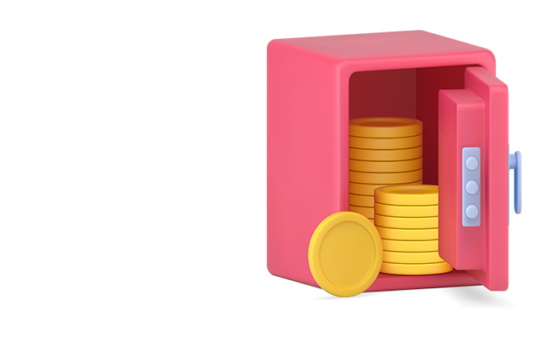
Banking & Insurance - April 16th
KEY POINTS: From July 1, the Deposit Compensation Scheme (DCS) will protect savers' money deposited in savings accounts with registered banks and licensed deposit takers in NZ. The DCS will cover up to $100,000 of a…
– Read more
Banking & Insurance - March 5th
What is a high interest savings account? High interest savings accounts typically offer higher rates of interest than traditional savings accounts. However, currently, such rates are not particularly high. The average rate of interest offered across…
– Read more
Banking & Insurance - July 15th
Congratulations to Heartland Bank, for consistently delivering market-leading savings products and winning Canstar's Bank of the Year | Savings Award for the seventh straight year. In the current, high-interest-rate environment, saving towards a more secure financial…
– Read moreA savings account is an account into which you deposit money in order to earn interest and build savings.
Savings accounts simplify the process of saving money by creating a separation between the money you’re saving and everyday spending – which is usually kept in a transaction account.
Savings are important for many reasons – a rainy day, unexpected expenses, and of course, retirement.
The key to growing your savings is to set realistic goals and understand what to look for when choosing a savings account.
Here are a few things to consider when comparing savings accounts:
Common fees to look out for include:
To compare interest rates, use Canstar’s free comparison tool.
For our Savings Accounts Star Ratings and Award, we assess savings accounts across two customer profiles: Flexible Saver and Regular Saver.
For consumers looking to maximise their savings with no restrictions on access to their funds.
For more active savers who are willing to meet stricter conditions to achieve higher levels of interest. Such accounts include notice saver accounts, that require you to give a set period of notice before you can withdraw your funds, for example 30 or 90 days.
Please note that these are a general explanation of the meaning of terms used in relation to everyday accounts. Your bank or financial institution may use different terms, and you should read your product disclosure statement (PDS) carefully to understand everything that may apply to your account. You cannot rely on these terms in relation to any transaction account you may open.
Account-keeping or administration fee: An ongoing fee charged to cover the lender’s administration costs for creating and maintaining the account. Usually charged monthly on everyday accounts.
ATM (Automatic Teller Machine): A machine found in public places, which allows you to withdraw funds from your account, usually 24/7.
Balance: The amount of money available in your everyday account.
Banking Ombudsman: If you have a dispute with your bank and haven’t been able to resolve it through the bank’s internal complaints resolution process, you can contact the Banking Ombudsman of New Zealand. It is a free and independent service that helps people resolve disputes with their financial institution.
Basis points: A unit of measurement used to describe the percentage change in interest rates or the value of a financial product. One basis point is 0.01%.
Branch: The physical building where your bank or financial institution exists. Branches are usually only open during normal working hours.
Cash: Money in the physical form of notes and coins.
Cheque account or checking account: A everyday account that allows you to make payments with your own money by writing cheques. If you do not have enough money in your account when the recipient cashes your cheque into their own account, the cheque will “bounce”, meaning it is not be paid and you may be charged penalty fees.
Consumer: Someone who buys and uses products or services.
Credit card: A card that gives the account holder access to a line of credit. You can spend up to a specified credit limit, but the money must be repaid, otherwise you start paying interest on the balance of the card (whatever you have spent).
Debit: Withdrawal transaction.
Debit card: A card that is linked to a everyday account and allows the cardholder to make payment transactions and ATM withdrawals. Also known as a bank card or cheque card.
Deposit: Money that you put into an account with a financial institution. (A “deposit” can also refer to a down-payment on an item you are purchasing. It is paid as a promise to purchase, with the balance of the purchase price remaining to be paid.)
Direct debit: When a transaction is automatically removed from an account and received into a different person’s account. For example, your salary or wages are automatically removed from your employer’s bank and deposited into your bank account.
EFTPOS (Electronic Funds Transfer at Point of Sale): A payment system that allows you to use your debit card to make payments for goods or services, or withdraw cash. An EFTPOS machine is used in-store to process debit and credit payments.
Electronic banking: A broad term used to refer to the banking system encompassing online banking, telephone banking, ATMs, mobile apps and EFTPOS. You can use electronic banking to make withdrawals, payments, deposits or transfers.
GST (Goods and Services Tax): The New Zealand tax levy on payments for goods and services.
Income: Money you earn, including wages, salary, interest, government benefits, and rental income.
Inflation: The percentage by which the prices of goods and services rise each year.
Interest: Money paid by a bank or other financial institution for the use of your money while deposited with them. Interest is earned over time by calculating a percentage of the balance of your account.
Internet banking: Online banking. Banking services performed through an internet browser on a computer, or via apps on smartphones or tablet devices connected to the internet.
Introductory rate: A promotional, introductory bonus interest rate applied to a new account for a set time period. At the end of the set period, rates revert to normal base rates.
Junior everyday account: Everyday accounts for children and youth. A parent or guardian operates the account in the child’s name until they reach legal age, but the child also has access to their account.
On-call: “On-call” or “at call” everyday or savings accounts allow you to withdraw your money immediately, with no waiting period.
Pay anyone: A payment system that allows you to transfer money to any individual or organisation using online or phone banking, as long as you have their account name and number.
Reserve Bank of New Zealand (RBNZ): The Reserve Bank is the central bank of New Zealand, and is responsible for setting the Official Cash Rate (OCR). It manages monetary policy and attempts to balance inflation and to maintain a sound and efficient financial system and economy. The RBNZ also issues our national banknotes and coins.
Savings account: Bank accounts that pay significant interest back to the account holder and cannot be used to make transactions. Savings accounts typically have higher interest rates than everyday accounts. They can be linked to everyday accounts to make savings available as funds for transactions as needed.
Transaction: The movement of money in or out, including deposits, withdrawals, and transfers between bank accounts.
Everyday account: A deposit account in which your money is available for day-to-day transactions. Provides frequent access to funds in your account for making payments through EFTPOS machines, online, ATMs and branches.
Transfer: When you give the bank instructions to move money from one account to another account, e.g. to move money from your savings account to your everyday account. This is different to a payment, when you send money from your account to somebody else’s bank account.
Withdrawal: Taking money out of your account, for example over the counter in a branch or using an ATM.